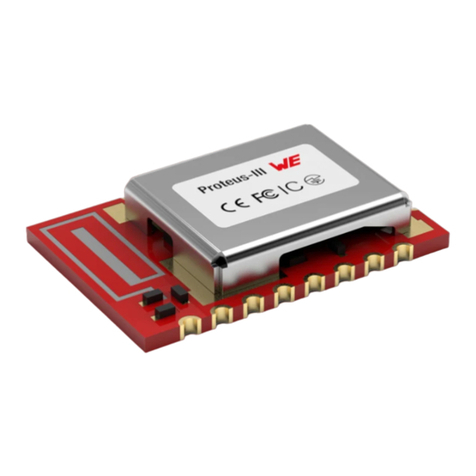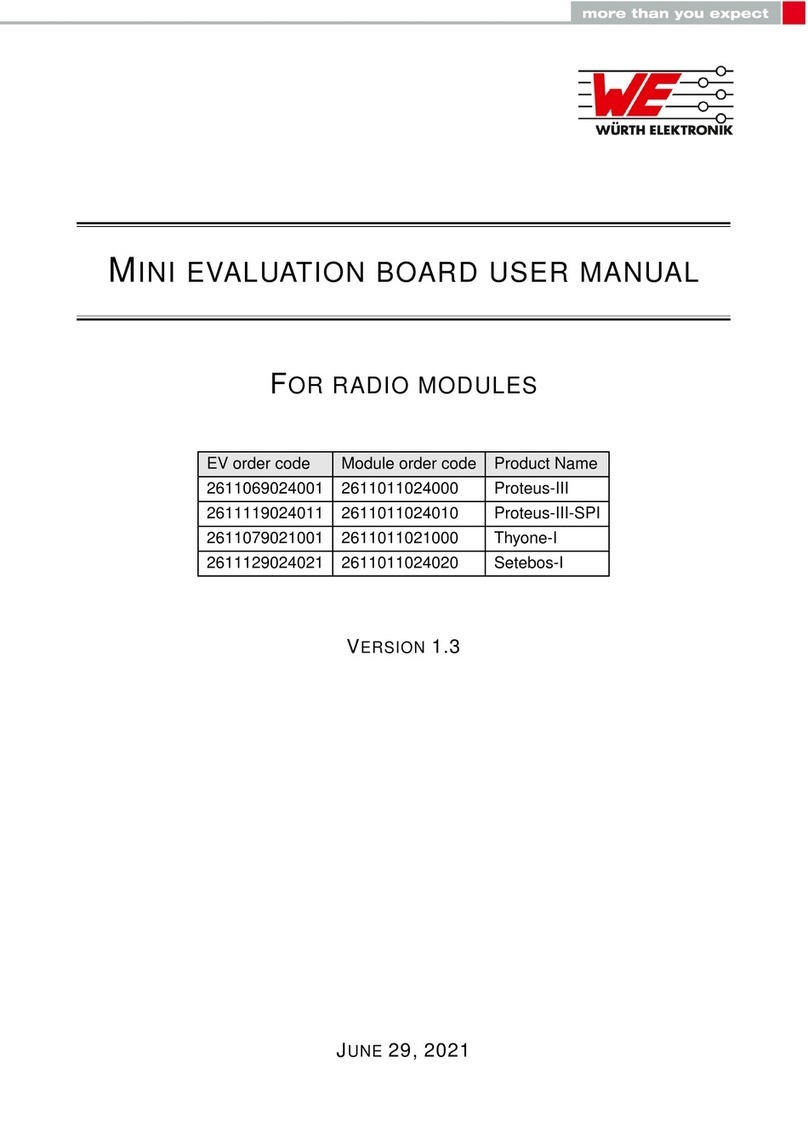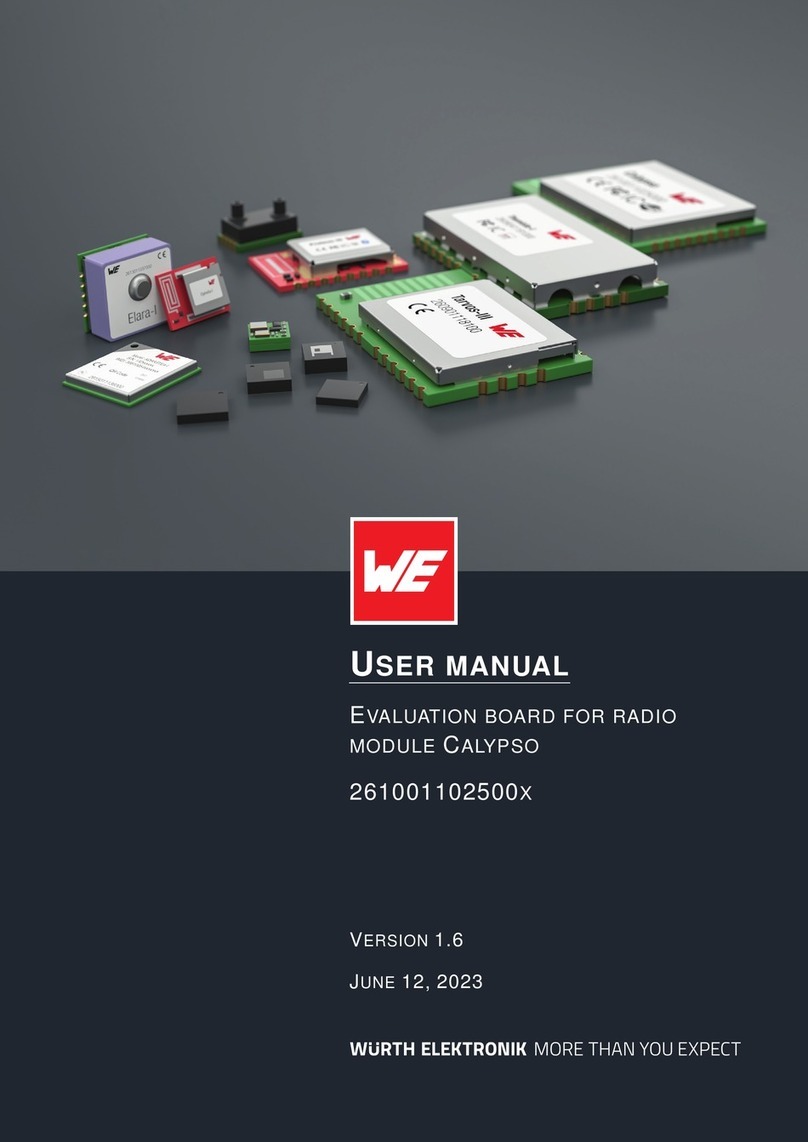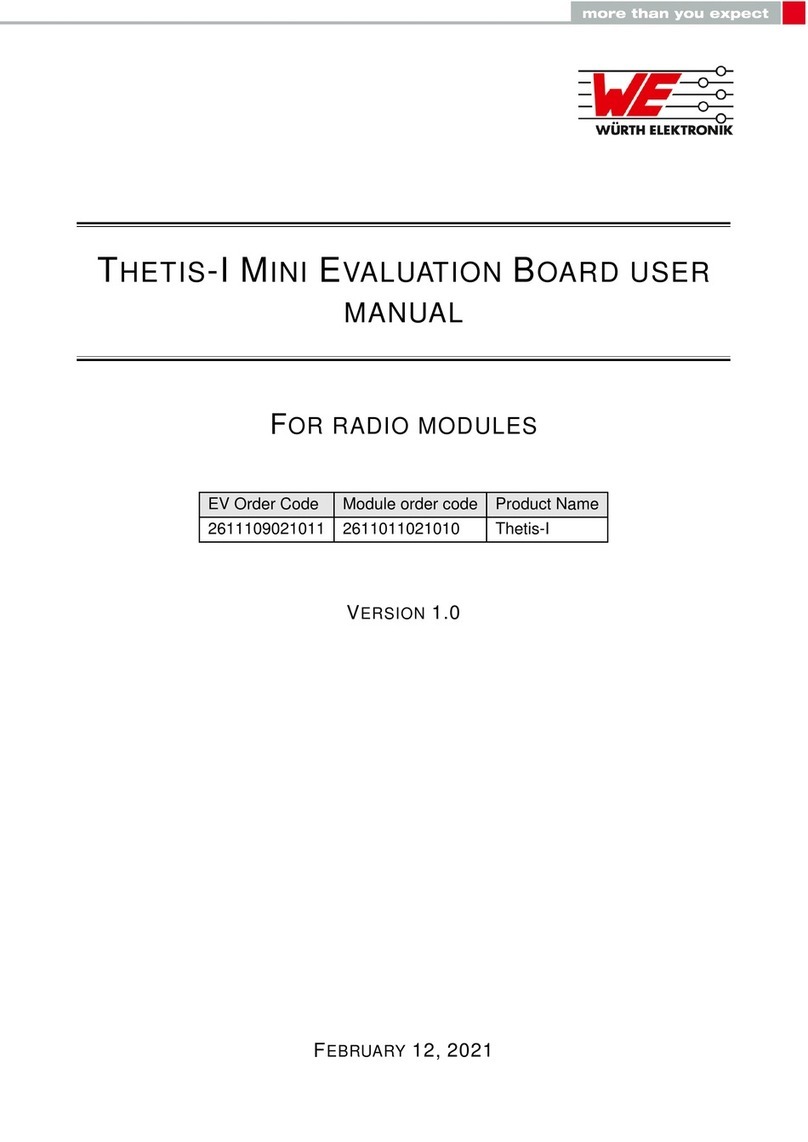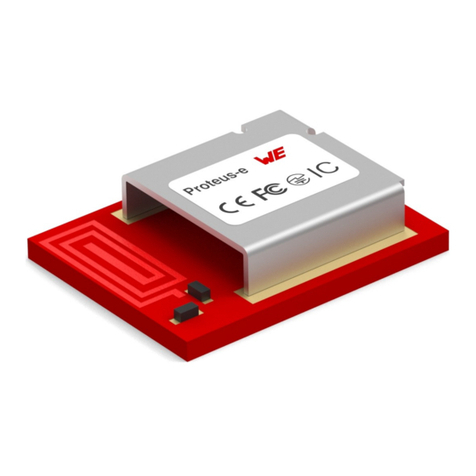
Contents
1 Supported radio modules 5
2 Functional description 7
2.1 Taking into operation - PC (Proteus-III/Thyone-I only) . . . . . . . . . . . . . 7
2.2 Taking into operation - Host controller . . . . . . . . . . . . . . . . . . . . . 8
3 Development board 9
3.1 Blockdiagram................................... 9
3.2 Additionalassembly ............................... 10
3.3 Connectorsandports .............................. 12
3.3.1 P1, P2, P4: Module access pins . . . . . . . . . . . . . . . . . . . . 13
3.3.2 P3: TTL-232R-3V3 FTDI cable connector . . . . . . . . . . . . . . 14
3.3.3 P5, P6: Alternative power supply connection . . . . . . . . . . . . . 14
3.3.4 JTAG Debugging Interface . . . . . . . . . . . . . . . . . . . . . . . 14
3.3.5 SMA ................................... 15
3.4 Jumpers...................................... 16
3.4.1 I_Meas: Current measurement . . . . . . . . . . . . . . . . . . . . 17
3.4.2 JP2: Operation mode . . . . . . . . . . . . . . . . . . . . . . . . . . 18
3.4.3 JP3:Bootmode............................. 18
3.5 Resetbutton ................................... 19
3.6 Functionblocks.................................. 20
3.6.1 Powersupply .............................. 20
3.6.1.1 Connector P3, power supply through TTL-232R-3V3 . . . . . . 20
3.6.1.2 Connector P3, power supply through external source . . . . . . 20
3.6.1.3 Connectors P5 and P6, power supply through external source . 20
3.6.2 UART/USB............................... 21
3.6.3 UARTdirect ............................... 21
3.6.4 SPIdirect ................................ 21
3.6.5 LFXOcrystal .............................. 21
3.6.5.1 LFXO Design guidelines . . . . . . . . . . . . . . . . . . . . . . 23
3.6.6 Programming interface . . . . . . . . . . . . . . . . . . . . . . . . . 23
3.7 Schematic..................................... 24
3.8 Layout....................................... 25
3.9 Billofmaterials.................................. 27
4 Regulatory compliance information 28
4.1 EuropeanConformity............................... 28
4.2 FCC ........................................ 28
4.3 Exemptionclause................................. 28
5 Important notes 29
5.1 General customer responsibility . . . . . . . . . . . . . . . . . . . . . . . . . 29
5.2 Customer responsibility related to specific, in particular safety-relevant ap-
plications ..................................... 29
5.3 Best care and attention . . . . . . . . . . . . . . . . . . . . . . . . . . . . . 29
5.4 Customer support for product specifications . . . . . . . . . . . . . . . . . . 29
5.5 Productimprovements.............................. 30
5.6 Productlifecycle ................................. 30
5.7 Propertyrights .................................. 30
Mini evaluation board user manual version 1.2 © February 2021
www.we-online.com/wireless-connectivity 3
